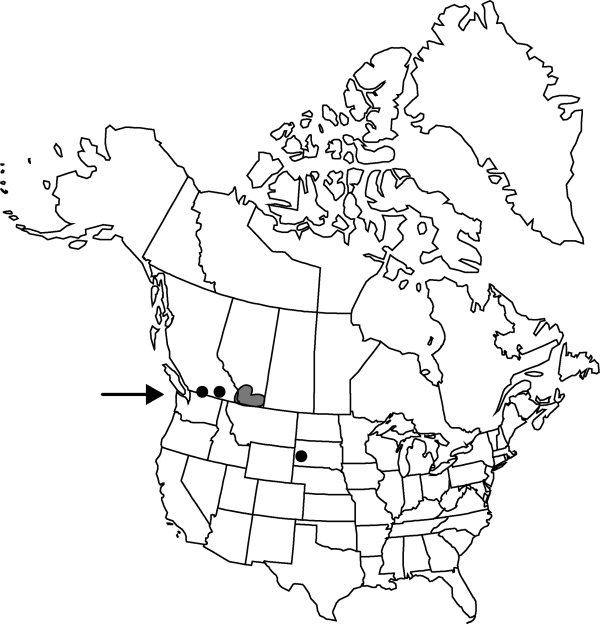Difference between revisions of "Atriplex oblongifolia"
Descr. Icon. Pl. Hung. 3: 278, plate 211. 1812.
FNA>Volume Importer |
imported>Volume Importer |
||
| (2 intermediate revisions by 2 users not shown) | |||
| Line 8: | Line 8: | ||
}} | }} | ||
|common_names=Oblong-leaf orach | |common_names=Oblong-leaf orach | ||
| + | |special_status={{Treatment/ID/Special_status | ||
| + | |code=I | ||
| + | |label=Introduced | ||
| + | }} | ||
|basionyms= | |basionyms= | ||
|synonyms= | |synonyms= | ||
| Line 24: | Line 28: | ||
|elevation=400-1000 m | |elevation=400-1000 m | ||
|distribution=Alta.;B.C.;Ont.;S.Dak.;Europe. | |distribution=Alta.;B.C.;Ont.;S.Dak.;Europe. | ||
| + | |introduced=true | ||
|discussion=<p>I. J. Bassett et al. (1983) indicated that <i>Atriplex oblongifolia</i> formed abundant, very fertile hybrids with <i>A. patula</i> in the Botanic Garden at Manchester University. This is a weedy species with facies similar to both <i>A. dioica</i> and <i>A. glabriuscula </i>var.<i> acadiensis</i>. The proximal branches at least are opposite, similar to phases of the nearly allied <i>A. patula</i>, however. It is likewise an introduced ruderal weed of roadsides and other waste places. Its spread in North America awaits documentation. The thin, entire fruiting bracts without appendages are pointed to as diagnostic of this entity from other similar species.</p> | |discussion=<p>I. J. Bassett et al. (1983) indicated that <i>Atriplex oblongifolia</i> formed abundant, very fertile hybrids with <i>A. patula</i> in the Botanic Garden at Manchester University. This is a weedy species with facies similar to both <i>A. dioica</i> and <i>A. glabriuscula </i>var.<i> acadiensis</i>. The proximal branches at least are opposite, similar to phases of the nearly allied <i>A. patula</i>, however. It is likewise an introduced ruderal weed of roadsides and other waste places. Its spread in North America awaits documentation. The thin, entire fruiting bracts without appendages are pointed to as diagnostic of this entity from other similar species.</p> | ||
|tables= | |tables= | ||
| Line 47: | Line 52: | ||
|publication title=Descr. Icon. Pl. Hung. | |publication title=Descr. Icon. Pl. Hung. | ||
|publication year=1812 | |publication year=1812 | ||
| − | |special status= | + | |special status=Introduced |
| − | |source xml=https:// | + | |source xml=https://bitbucket.org/aafc-mbb/fna-data-curation/src/2e0870ddd59836b60bcf96646a41e87ea5a5943a/coarse_grained_fna_xml/V4/V4_631.xml |
|genus=Atriplex | |genus=Atriplex | ||
|subgenus=Atriplex subg. Atriplex | |subgenus=Atriplex subg. Atriplex | ||
Latest revision as of 22:59, 5 November 2020
Herbs, erect, branching from base, mostly 6–12 dm. Leaves alternate above; petiole 0.5–3 cm; blade green on both sides or distal leaves whitish abaxially, triangular to lance-triangular, (20–)30–85 × 6–90 mm, base hastate or sub-cuneate, margin subentire, entire, or irregularly dentate, farinaceous at first, later glabrous. Flowers in terminal or axillary ± paniculate inflorescences 6–25+ cm. Staminate flowers with 5 sepals. Pistillate flowers dimorphic, all bracteolate and lacking sepals. Bracteoles loosely spaced, of 2 sizes; large fruiting bracteoles oval to ovate, 5–6 × 5 mm, with faces lacking appendages, small ones similar in shape, 2 mm and wide. Seeds vertical; of large bracteoles yellowish brown, 2–3 mm wide, flat, dull; of small bracteoles black, 1.5 mm wide or less, shiny; radicle of brown seeds subbasal to median and antrorse. 2n = 36.
Phenology: Flowering summer.
Habitat: Ruderal
Elevation: 400-1000 m
Distribution

Introduced; Alta., B.C., Ont., S.Dak., Europe.
Discussion
I. J. Bassett et al. (1983) indicated that Atriplex oblongifolia formed abundant, very fertile hybrids with A. patula in the Botanic Garden at Manchester University. This is a weedy species with facies similar to both A. dioica and A. glabriuscula var. acadiensis. The proximal branches at least are opposite, similar to phases of the nearly allied A. patula, however. It is likewise an introduced ruderal weed of roadsides and other waste places. Its spread in North America awaits documentation. The thin, entire fruiting bracts without appendages are pointed to as diagnostic of this entity from other similar species.
Selected References
None.